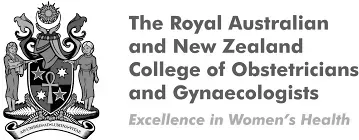Gynaecological Conditions
What are Gynaecological Conditions?
Gynaecological conditions refer to any disorders or diseases that affect the female reproductive system, which include the uterus, ovaries, fallopian tubes, vagina, and external genitalia. These conditions can vary from infections and benign growths to malignancies and hormonal disorders. Gynaecological conditions can affect women of all ages and often impact reproductive health, menstrual cycles, sexual function, and overall well-being.
Impact of Gynaecological Conditions on Anatomy and Health
Conditions like endometriosis can cause severe pain and affect the structure and function of the ovaries and uterus, leading to complications like infertility. Similarly, uterine fibroids can cause heavy menstrual bleeding and discomfort, while gynaecological cancers can have wide-ranging effects, depending on the cancer's type and stage. These conditions can also have a significant psychological impact, leading to anxiety, depression, and stress.
Cause and Risk Factors for Gynaecological Conditions
Risk factors for gynaecological conditions can vary greatly depending on the specific condition, but some common risk factors may include:
- Age: Certain conditions, such as menopause and certain types of cancer, become more common as women age.
- Hormonal Imbalance: PCOS and endometriosis are often related to hormonal imbalances.
- Genetic Factors: Some gynaecological conditions have a hereditary component. For instance, women with a family history of ovarian or breast cancer are at a higher risk of developing these diseases.
- Obesity: Being overweight or obese can increase the risk of various gynaecological conditions, including uterine fibroids and certain types of cancer.
- Sexually Transmitted Infections (STIs): Some STIs can lead to pelvic inflammatory disease (PID), which can cause fertility issues if left untreated.
- Lifestyle Factors: Certain lifestyle factors, such as smoking and alcohol consumption, can increase the risk of gynaecological cancers.
- Reproductive History: Certain factors related to a woman's reproductive history can also affect risk. For example, having never been pregnant can increase the risk of certain types of cancer. At the same time, long-term use of oral contraceptives can decrease the risk of ovarian and uterine cancer.
- Chronic Stress and Poor Nutrition: These can affect overall health and well-being, including reproductive health.
Risk factors can only influence the likelihood of a condition—they do not guarantee that a woman will develop a specific condition. Additionally, some women with several risk factors never develop gynaecological conditions, while others with no known risk factors do. Regular check-ups and screenings are important for early detection and treatment of these conditions.
Symptoms of Gynaecological Conditions
The symptoms of gynaecological conditions can vary widely, but common symptoms may include:
- Abnormal or heavy menstrual bleeding
- Pelvic pain or discomfort
- Abdominal bloating or swelling
- Pain during sex
- Frequent urination or constipation
- Changes in the menstrual cycle
- Persistent indigestion or nausea
- Unexplained weight loss or gain
- Itching, burning, swelling, redness, or soreness in the vaginal area
These symptoms can also be associated with non-gynaecological conditions, so it's essential to consult with a gynaecologist if you're experiencing any unusual symptoms. Early detection and treatment can significantly improve outcomes for many gynaecological conditions.
Prevention of Gynaecological Conditions
Preventing gynaecological conditions involves a combination of lifestyle choices, regular medical check-ups, and awareness of symptoms. Here are some key preventive measures:
- Regular Screening and Check-ups:
- Schedule routine pelvic exams and Pap smears to detect abnormalities early.
- Undergo regular mammograms as recommended by your healthcare provider.
- Vaccinations:
- Get vaccinated against human papillomavirus (HPV) to reduce the risk of cervical cancer and genital warts.
- Safe Sexual Practices:
- Use condoms to reduce the risk of sexually transmitted infections (STIs).
- Limit the number of sexual partners and practice monogamy.
- Healthy Lifestyle:
- Maintain a balanced diet rich in fruits, vegetables, and whole grains.
- Exercise regularly to maintain a healthy weight.
- Avoid smoking and limit alcohol consumption.
- Good Hygiene Practices:
- Practise proper genital hygiene, such as wiping front to back.
- Avoid douching, which can disrupt the natural balance of bacteria in the vagina.
- Managing Medical Conditions:
- Control chronic conditions like diabetes and hypertension that can impact reproductive health.
- Follow treatment plans for hormonal imbalances and other health issues.
Types of Gynaecological Conditions
Gynaecological conditions encompass a wide range of disorders, which can be broadly categorised into several types:
- Menstrual Disorders:
- Amenorrhea: Absence of menstruation.
- Dysmenorrhea: Painful periods.
- Menorrhagia: Heavy menstrual bleeding.
- Premenstrual Syndrome (PMS): Symptoms occurring before menstruation.
- Infections:
- Bacterial Vaginosis: Overgrowth of normal vaginal bacteria.
- Yeast Infections: Overgrowth of Candida fungus.
- Trichomoniasis: Parasitic infection.
- Pelvic Inflammatory Disease (PID): Infection of reproductive organs.
- Hormonal Disorders:
- Polycystic Ovary Syndrome (PCOS)
- Endometriosis
- Menopause
- Benign Growths:
- Uterine Fibroids: Non-cancerous growths in the uterus.
- Ovarian Cysts: Fluid-filled sacs on the ovaries.
- Endometrial Polyps: Growth in the lining of the uterus.
- Malignancies:
- Cervical Cancer
- Ovarian Cancer
- Endometrial Cancer
- Vulvar Cancer
- Structural Disorders:
- Prolapse: Descent of pelvic organs into the vaginal canal.
- Congenital Anomalies: Birth defects affecting reproductive organs.
Paediatric & Adolescent Gynaecology
Paediatric and adolescent gynaecology focuses on the health and medical care of infants, children, and adolescents with conditions related to the female reproductive system. Conditions can be congenital (present at birth) or acquired during the years of growth and development. Here are some common conditions and issues that fall under this category:
- Menstrual irregularities
- Polycystic ovary syndrome (PCOS)
- Ovarian cysts
- Vaginal and Vulvar infections
- Puberty problems
- Vaginal bleeding
Dr Alyousif can educate young patients about their reproductive health and guide menstruation, sexuality, and contraception.
Reproductive Aged Women
Reproductive-aged women, typically between the ages of 15 and 49, can face various gynaecological conditions. These conditions may affect their menstrual cycle, fertility, sexual health, and overall well-being. Here are some common conditions:
- Menstrual Disorders: This includes conditions like irregular periods (oligomenorrhea), painful periods (dysmenorrhea), heavy bleeding (menorrhagia), and absent periods (amenorrhea).
- Contraception: This refers to methods used to prevent pregnancy. It includes barrier methods (like condoms), hormonal methods (like birth control pills), intrauterine devices (IUDs), emergency contraception, sterilisation, and natural methods.
- Endometriosis: This is a painful disorder where tissue that normally lines the inside of the uterus, the endometrium, grows outside the uterus.
- Fibroids: These are non-cancerous growths that develop in or around the uterus. The growths are made from muscle and fibrous tissue and vary in size. They're also known as uterine myomas or leiomyomas.
- Menopause: This is the time in a woman's life when her menstrual periods stop permanently, and she can no longer become pregnant naturally. Menopause usually occurs in the late 40s or early 50s and can cause symptoms like hot flashes, night sweats, sleep problems, and vaginal dryness.
- Ovarian Cysts: These are fluid-filled sacs or pockets in an ovary or on its surface. Women have two ovaries — each about the size and shape of an almond — on each side of the uterus.
- Sexually Transmitted Infections (STIs): These are infections most commonly spread through sexual activity, including human papillomavirus (HPV), herpes, chlamydia, gonorrhoea, and HIV/AIDS.
- Polyps: Polyps are small, benign (non-cancerous) growths that can form in different body parts, including the nose, colon, and uterus. In the uterus, they are typically found on the lining of the uterus, known as the endometrium.
It's important for women to regularly consult with their gynaecologists to monitor their reproductive health, receive routine screenings, and address any symptoms or concerns.
Diagnosis of Gynaecological Conditions
Diagnosis of gynaecological conditions often involves several steps, including:
- Medical History: Your gynaecologist will likely start by asking about your symptoms, menstrual cycle, sexual activity, contraception, past medical history, and family history.
- Physical Examination: A pelvic examination can help detect abnormalities such as cysts or fibroids.
- Laboratory Tests: Blood and urine tests can help identify infections or hormonal imbalances.
- Imaging Tests: Ultrasounds, MRIs, or CT scans can help visualise the uterus, ovaries, and other parts of the reproductive system.
- Biopsy: Sometimes, a small tissue sample may be taken for testing.
Treatment of Gynaecological Conditions
Treating gynaecological conditions depends on various factors, including the specific condition, its severity, the woman's age, her desire to have children, and her overall health. Here are some general approaches:
- Lifestyle Modifications: For certain conditions, such as PCOS or mild urinary incontinence, lifestyle changes like maintaining a healthy weight, regular exercise, and a balanced diet can be helpful. For menopausal symptoms, avoiding triggers for hot flashes (like spicy foods and hot temperatures) and practising mindfulness or relaxation techniques can be beneficial.
- Medication: Various medications can be used to treat gynaecological conditions. Hormonal therapies (like birth control pills) can help manage conditions like endometriosis or heavy periods. Antibiotics can treat conditions caused by infections like pelvic inflammatory disease. For menopausal symptoms, hormone replacement therapy (HRT) might be an option.
- Physical Therapy: This can be especially helpful in pelvic pain or urinary incontinence conditions. Pelvic floor exercises (such as Kegels) can strengthen the muscles supporting the uterus, bladder, and bowel, improving symptoms.
- Counselling and Support: Dealing with gynaecological conditions can be emotionally challenging. Counselling or support groups can help women manage the psychological aspects of their conditions.
- Contraception Management: For those who want to avoid pregnancy, various contraceptive options include hormonal methods (like the pill or patch), intrauterine devices (IUDs), barrier methods, and sterilisation procedures.
- Surgery: Various surgical options exist for conditions like fibroids, severe endometriosis, or gynaecological cancers. These can range from minimally invasive surgeries (like laparoscopy) to procedures to remove the abnormal tissue or organ (like myomectomy for fibroids or hysterectomy for severe cases) or more extensive surgery for advanced cancers.
What if Gynaecological Conditions are Untreated?
If left untreated, gynaecological conditions can potentially lead to serious health complications, including:
- Chronic pain
- Infertility or difficulty getting pregnant
- Complications during pregnancy and childbirth
- Spread of infection or disease
- Increased risk of gynaecological cancers
Furthermore, these conditions can greatly impact a woman's quality of life, causing emotional distress and negatively affecting her sexual health and personal relationships. Early diagnosis and treatment can help prevent these complications and improve a woman's long-term health and well-being.



